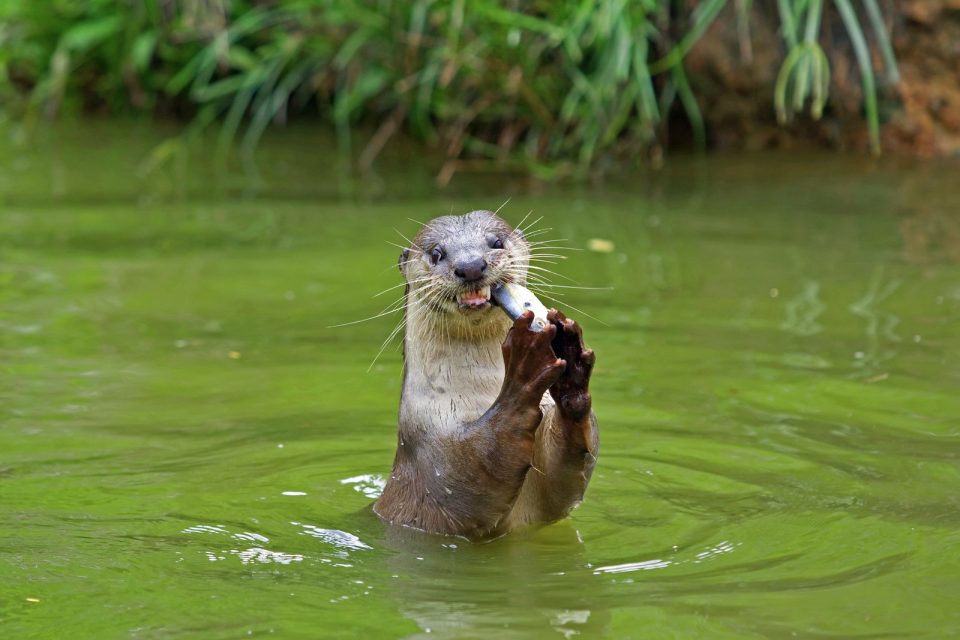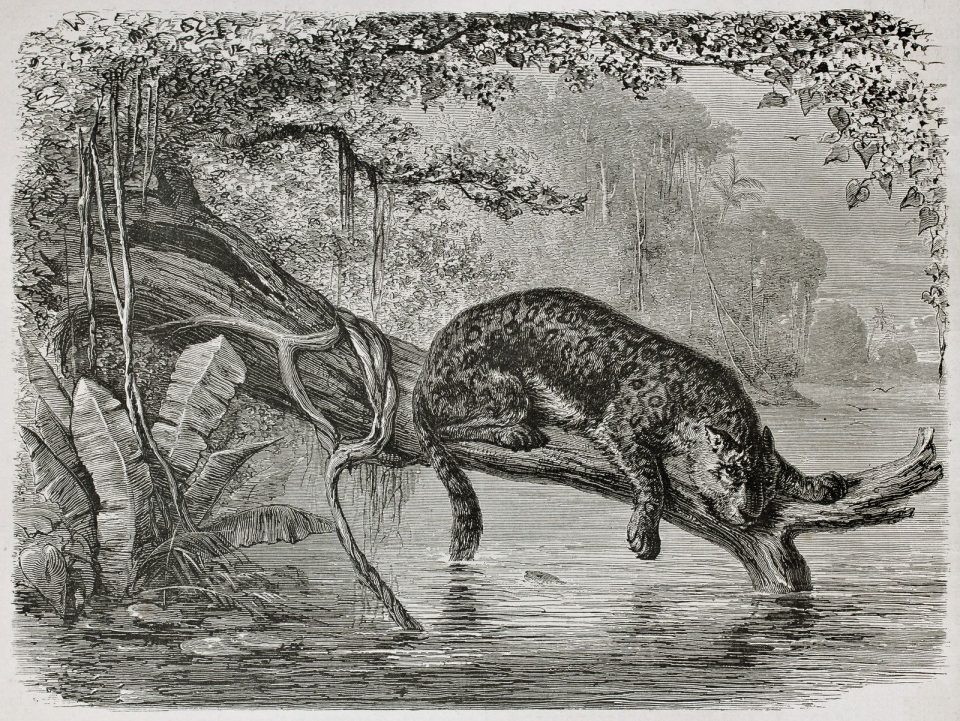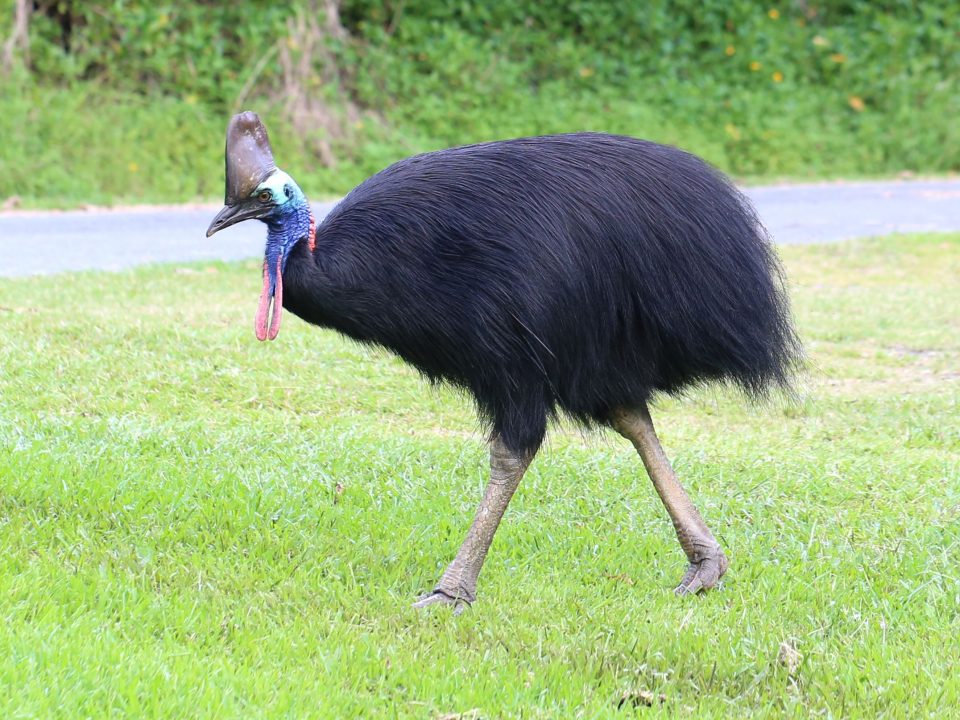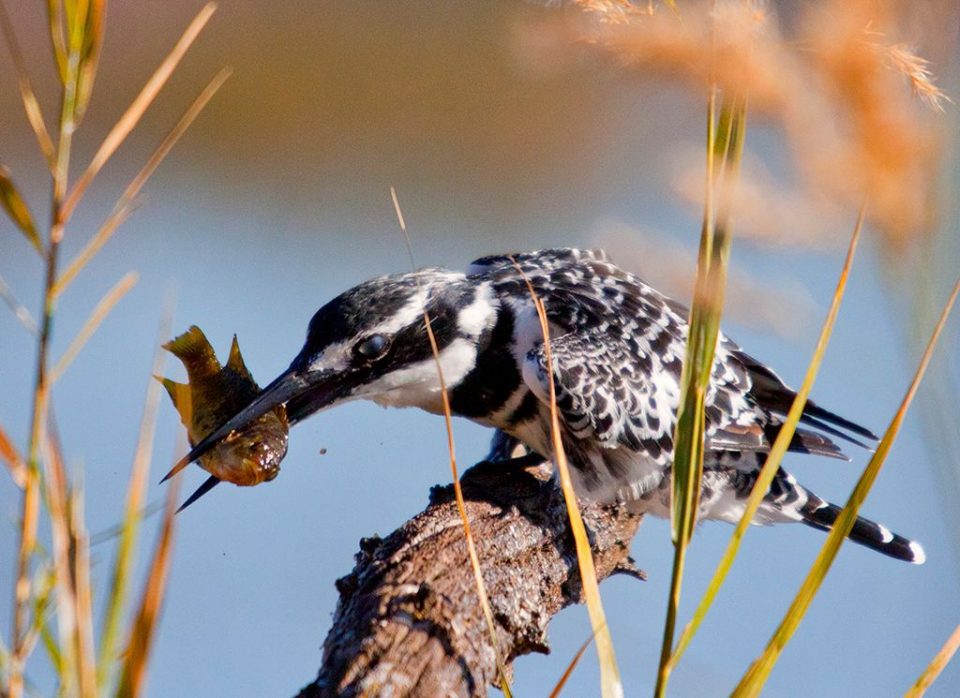ON FLORIDA’S WATERS
By: KEVIN MCCARTHY
CAPTIONS
1. An otter with a fish
2. A jaguar fishing
3. A cassowary has long feathers.
4. A kingfisher with a fish
5. A cormorant catching a fish
6. A Chinese fisherman with two cormorants
Getting Animals to Fish for Us
For those who think fishing is too hard (remember: It’s fishing, not catching), here’s a solution tried throughout the world: getting animals to fish for us. People have done neat things with different kinds of animals. The Ainu in Japan have trained their dogs to jump off their boats, bark loudly, and drive fish into the nets attached to the boats. Eskimos have trained their dogs to find polar bears or even to find the breathing holes of seals under the snow. One particular Eskimo tribe sets aside part of every such catch, something called “the dogs’ share,” as a reward for finding the seals. Some tribes bury a skilled hunter with his favorite dog.
Otters have been known to catch crayfish by dangling their tail in the water and attracting the curious fish. Other animals that have been observed using their tails to attract unsuspecting fish and crabs are coyotes, foxes, raccoons, and rats, but the predators usually gobble down their catch. They might be difficult to train to allow a fisherman to take the prey out of the mouths of the animals, for example the kingfisher pictured here.
Jaguars, the wild kind, not the football players, have learned to put their tails in the water and move them around to attract fish which think the motion and sound are from fresh fruit falling into the water. The jaguars then easily scoop the fish up with their paws.
The cassowary birds of New Guinea and Australia wag their wings in the water to attract fish which think the feathers are weeds. The fish become easy to catch for the big birds.
The Chinese have become very skilled at using cormorants to catch fish. The fishermen will begin when the birds are very young, teaching them to fish in shallow water after fastening straps around the birds’ necks to prevent them from swallowing the fish. Notice the photo here of a Chinese fisherman and his two valuable cormorants.
When the birds get a little older, the fishermen will take them out on their boats, dangle containers of fire over the sides to attract the fish, throw the birds overboard, and then gather in the fish as the birds swiftly dive deeply and quickly retrieve lots of fish near the baskets hanging down from the boat. Fishermen have been known to use as many as a dozen cormorants at a time.
So, if there are any lazy fishermen out there, think about getting some cormorants to do your work for you. If nothing else, the sight of diving birds catching fish and putting them in baskets will provide nearby anglers with a great story to tell back on land.
Kevin McCarthy, the author of “Alligator Tales” (Pineapple Press, 1998), can be reached at ceyhankevin@gmail.com.





